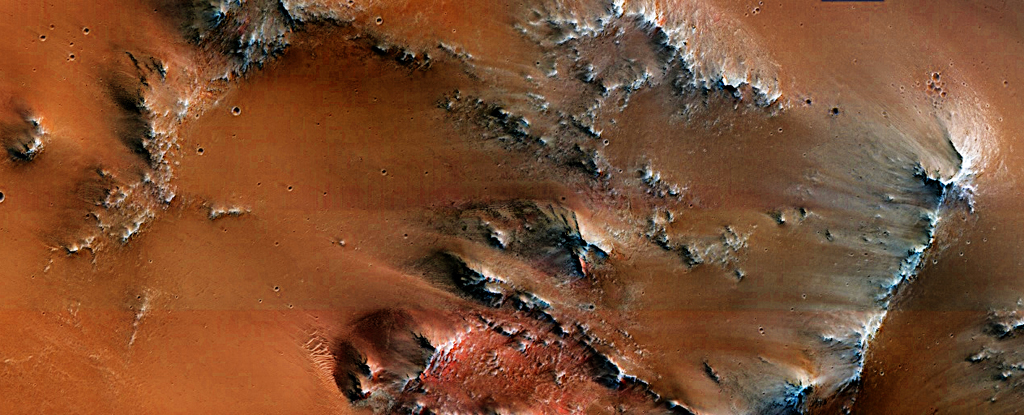A recent study published in Geophysical Research Letters aimed to answer the question of how thick Mars’ crust is. The study reported on data from a magnitude 4.7 marsquake recorded in May 2022 by NASA’s InSight lander, which is the largest quake ever recorded on another planetary body. The data helped estimate Mars’ global crustal thickness and led to a unique discovery regarding the crust in the northern and southern hemispheres, and how the interior of Mars produces heat.
Estimating the Thickness of Mars’ Crust
Using data from the May 2022 quake and existing data on Mars’ gravity and topography, the researchers estimated the average global crustal thickness between 42-56 kilometers (26-35 miles). The thickest crust is approximately 90 kilometers (56 miles) located in the Tharsis province, also known as the Tharsis volcanic plateau, and the thinnest crust is approximately 20 kilometers (12 miles) located at the Hellas impact basin, also known as Hellas Planitia.
Comparatively, Earth’s average global crustal thickness is 24 kilometers (15 miles), and the Moon’s crustal thickness is between 34-43 kilometers (21-27 miles) based on seismic data from the Apollo missions. The Martian crust is much thicker than that of the Earth or the Moon. However, seismic data for other planetary bodies does not exist and is based entirely on measurements from gravity and topography.
Density of Mars’ Crust in the Hemispheres
Another key finding of the study is the similar densities of the crusts between the northern and southern hemispheres, despite each having a large difference in their crustal thickness. The southern hemisphere’s crust extends deeper into the planet than its northern hemisphere counterpart. This similarity in density allows an end to a long-standing scientific discussion on the origin and structure of the Martian crust, according to the study’s lead author, Doyeon Kim.
Heat Production in Mars’ Crust
The decay of radioactive elements, including uranium, thorium, and potassium, produces heat in Mars, and between 50-70 percent of these elements are found within the Martian crust. The study suggests that the large amount of these heat-producing elements present in the crust could explain small melt zones within the interior of Mars. Therefore, Mars could be geologically active today, according to researchers.
The InSight Mission
InSight recorded more than 1,300 marsquakes during its more than four years on the Red Planet after landing in Elysium Planitia in November 2018. Along with recording the large quake on another planetary body, InSight also recorded quakes from meteorite impacts, collected data from marsquakes to map the interior of Mars, used its air pressure sensor to “hear” the sounds of Mars, and attempted to measure the interior temperature of Mars. Unfortunately, the mission ended in December 2022 after its solar panels became caked with too much Martian dust, which prevented the spacecraft from recharging.
The data sent back from the InSight mission is poised to give scientists years of new information on the Red Planet’s interior and composition. For now, InSight remains in Elysium Planitia until it’s (possibly) retrieved by future astronauts, as there are currently no InSight-like missions scheduled to travel to Mars.



Leave a Reply